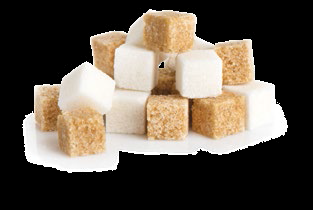New Facts & Findings On Healthy Eating.



"It’s time to adopt the highfact diet. Here, we share new findings and bust some myths so you can get smart about what goes on your plate."
We make an astonishing number of food decisions every day – more than 200, in fact. Of course, we’re not aware of all these decisions, as on many occasions it’s our subconscious coming into play. On the one hand, this allows us to focus more on other things, but on the other hand, it can lead to not-so-healthy decisions, especially when it comes to something as emotionally charged as eating. But how can we navigate this maze, become smarter eaters, and really enjoy food if we don’t even know the role our mind and brain play in our daily food choices?
Thankfully, research in this area has made great progress in recent years – a stroke of luck not only for our health, but also for our enjoyment of the food on our plates.
We’ve barely woken up, and we’re already thinking about food. Where should we get coffee, and what will you have with it? Where’s a nice place to have lunch, and with whom? Sushi or pizza after work? And what do we need to top up in the fridge? We make 80 per cent of all food decisions at home, or in the nearby area. Our direct home environment, and a small radius of less than 10 km around it, determines how and where we satisfy our hunger and culinary cravings every day. Psychologist Brian Wansink calls it the “food radius”.
We notice the degree to which this becomes a habit as soon as our food radius changes, like when we go on holiday. No matter where we are, we immediately test the new territory’s culinary suitability and establish rituals because most of us are extremely ritualised – or simply in our comfort zone – when it comes to shopping and eating. This sense of comfort is based on an ecological principle known as optimal foraging. According to this principle, we prefer to seek food sources which guarantee maximum net energy intake for the lowest amount of energy expended.
HOW TO MAKE IT WORK If we want to understand why we eat a particular way, we need to critically examine our food radius. How do we do this? Look at which shops nearby reinforce healthy habits, and which reinforce unhealthy ones. Where do we go, and why? Do we go for frozen vegetables at the supermarket because that’s more practical than making a detour to the wet market? Discovering our food radius can highlight the healthier options that are actually available to us.
An extensive study by scientists at the Weizmann Institute of Science in Israel caused a stir in dietary research. In it, the blood sugar levels of the 800 participants were read every five minutes for a week. These levels provided detailed information on sleeping and eating habits, stress levels in certain situations, and sports and other activities. The study found giving broad dietary advice and recommendations to the general population has limited effectiveness. What may be healthy for one person may be far from healthy for another. “In some cases, the participants had completely opposite reactions to a meal,” says biologist Eran Segal. For example, one participant’s blood sugar levels shot up dramatically after eating tomatoes, while for others, eating sushi caused a sharper rise in blood sugar than ice-cream did.
Scientists believe that, in addition to age and exercise habits, bacterial flora in the gut are also a key factor in losing weight. Our gut is where a number of hormones are formed, including those determining whether we’re hungry or full. When certain bacterial strains dominate, fewer appetite suppressing hormones are released. This means it is often customised dietary advice, not general dietary recommendations, that will help to control increased blood sugar.
HOW TO MAKE IT WORK For you that may mean comprehensive, personalised dietary changes – which include probiotic foods for healthy gut flora – could be more likely to yield results than a generalised diet. Alternatively, we can follow the Japanese philosophy of hara hachi bu, meaning: “Only eat until you are 80 per cent full”.
Anyone who instinctively reaches for a chocolate bar when feeling down may be surprised by the results of the following experiment. Participants who watched a disturbing film were then given either their favourite comfort food, a snack they liked, a muesli bar or nothing. In all cases, their mood improved with or without the comfort food. Yet 81 per cent of participants had previously said they were convinced their comfort foods helped boost their mood. What is indisputable, however, is the fact that feelings affect our judgement.
When agitated, we find it more difficult to correctly assess the caloric value and fat content of food. Another experiment saw participants watch happy, sad or boring videos. They were then asked to estimate the fat content of a mixture of milk and cream. Those who had watched emotionally disturbing films significantly underestimated the fat content, whereas those who had watched boring films did not. Our working memory simply has limited capacities. It’s not possible for us to experience an emotional situation and still correctly assess the fat content of French fries.
HOW TO MAKE IT WORK The finding that our moods still brighten without fatty comfort foods can help us be more thoughtful about giving in to emotional eating. Reach for healthy snacks like fruit, yoghurt or muesli when cravings strike, knowing that you’ll still experience the same mood boost than if you had chosen the unhealthy snack.
How do we tell when we’ve eaten enough? Is it the moment we start feeling uncomfortably full? Or when we’ve finished everything on our plate? For most people, the feeling of a full stomach is the surest sign. The stomach is, in fact, a hollow organ, and can be trained similarly to a muscle, which is why its intake capacity can theoretically be doubled within a short space of time.
In one study, Allan Geliebter from Columbia University in New York inserted balloons into the stomachs of his participants, and filled these balloons with water in 100 ml increments. Each time more water was added, the participants would be asked how full they felt. The slim peoples’ intake capacity stopped at a stomach volume of around 100 ml, while that of the heavier participants only ended at 2,200 ml, and sometimes even higher. Those who rely solely on the sensation of their stomach being stretched are likely to be eating a lot more than they need.
When it comes to feeling full, hormones also play a part. When the hormone ghrelin is released into the stomach lining, it sends signals to the brain, where it influences complex processes such as hunger, sleep, addiction and satiation. Eating good fats is important as they not only cause ghrelin levels to slowly sink, but keeps them low for an extended period, which is why a handful of nuts will keep us feeling full.
HOW TO MAKE IT WORK We need to think about both what we eat and also how we eat. Dietary experts believe it’s impossible to have a healthy relationship with food when the body’s own signals are being ignored, and external cues like having an empty plate are instead used as indications of satisfaction.
We know what we eat affects our sleep quality; but did you know that how we sleep also affects what we eat? These are the findings of studies conducted by the New York Obesity Nutrition Research Centre. Too little sleep makes us hungry and weakens our self-control, as the hormone leptin is released during sleep, and tells the body it is full. That’s why we manage to go 10 hours without food. If we don’t sleep at all, don’t sleep long enough, or don’t sleep well, ghrelin – also known as the hunger hormone – comes into play.
Researchers at the University of Pennsylvania have confirmed the correlation between hunger and hours of sleep. They studied the eating habits of people who got a normal amount of rest, people who slept long hours, and people who didn’t get much sleep, and found those who were sleep deprived had the highest calorie intake and lowest vitamin C intake compared to normal sleepers and extended sleepers.

Milk or dark chocolate? Brown or white bread? We present the facts so you can make the right choices.




TEXT: BAUERSYNDICATION.COM.AU/ PHOTOS: 123RF.COM























